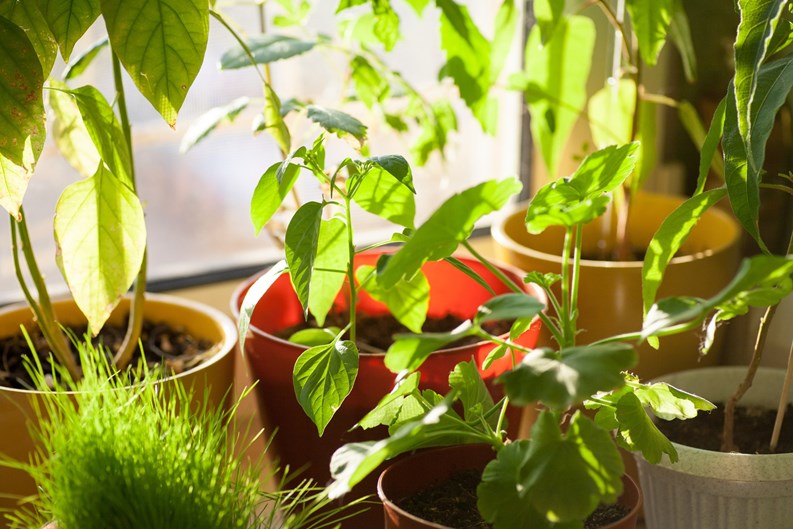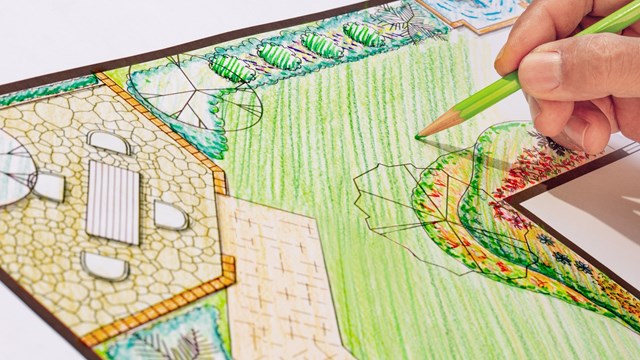Many New Yorkers have happy memories of their grandmothers’ apartments that were dense with greenery despite the heavy curtains, window security gates, and stifling radiators. Yet their own modern city abodes are as bare as a desert and lack even a cactus. So what was their grandmothers' secret in maintaining their greenery?
Care and Feeding
According to experts, there are four main reasons why houseplants die:
It begins with light, or not enough of it. Pick plants that require less light, the kind that grow naturally in the shaded forest or jungle floor. Think about it: if it thrives in abundant sunlight in its natural habitat, your window facing the courtyard in the second bedroom probably isn’t the best choice for that plant.
Watering is another major cause of death for our potted friends. And it’s not that you might forget--it’s that you water wrong. Overwatering can be as bad or worse as forgetting to water, causing root rot. A sudden shedding of yellowed leaves may indicate too much water. Water regularly once a week for most plants.
Don’t overfeed the plant with fertilizers and plant food. Remember those leaves that fell off that you didn’t remove from the planter? That’s plant food. It sounds like ‘plant cannibalism,’ but plant ecosystems recycle those dead leaves into food. Fertilize when your plant shows signs of needing it, like when new leaves don’t grow to the same size as old ones.
Also, keep in mind about your radiator and how dry your apartment gets especially in winter. For plants, low humidity increases heat stress, so give them a spritz of water now and then.
Plant Choice
Your choice of a plant companion may well decide your ‘green thumb’ success rate. Fact: you can’t grow roses in a dark apartment. But you can grow many other things. Certain types of plants like succulents and cacti due remarkably well in low-light environments. The most frequently mentioned plant for success in apartment settings is the spider plant. They were very popular back in the '70s and '80s, often hanging in kitchens and bathrooms in pots suspended from the ceiling
The snake plant is another perennial favorite that probably populated the cluttered windowsills of granny’s legendary urban jungle. They have a spikey, almost marble-like appearance with long, green stalks flecked with white or grey. Put a few in and around your home, they thrive in low-light conditions, and it will feel like a trip back in time. All that will be missing is the security gates on your windows.
Succulents like the paddle plant grow best with bright light though not direct light. The same is true of cacti. They are extremely non-fussy. Both require watering only once a week during their growing seasons, but during the winter season require even less
Aloe vera is a good choice for indoor gardening, too. It gives you a source of instant medication for scrapes and burns in the event of a minor kitchen disaster as well. They should be kept near a window and watered regularly.
A colorful addition to your indoor forestation efforts are African violets. These pink and purple blooms live on the floor of the jungle in deepest Africa and are not only used to, but thrive in the low level light environments of New York City apartments. Water them once a week religiously, but don’t drown them. With a little proper care they can add a splash of color to any apartment.
A Word From the Experts
Lisa Ricotta is a landscape designer, horticulturist, and owner of Bella Gardens, a boutique landscape design firm on the Upper West Side. She has been installing and maintaining gardens in urban environments for the past six years. She recommends pothos, a vine-like plant and the snake plant as great starter plants for the horticulturally-challenged. “The peace lily is nice too,” she says, “but requires a little more work.”
Juliette Vassilkioti of My City Plants has been in the horticulture industry for almost 20 years. She and her husband founded their company in Long Island City about six years ago. Her top choices are also the snake plant and the ZZ plant, which resembles bamboo.
As to why so many apartment dwellers fail at city horticulture, Ricotta says, “they don’t give the plants proper care and often make the wrong plant choice and put it in the wrong place.”
Vassilkiotti concurs, saying, “They make the wrong choice of plants and then put them in the wrong place like next to a radiator or air conditioner.” She also cautions potential plant enthusiasts to “don’t over water, less is more.”
Ricotta’s final advice? "If you’re having a problem, consult an expert.”
A J Sidransky is a published novelist and staff writer at The Cooperator.







Comments
Leave a Comment